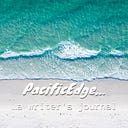Review:
A film remembered
I was going through some stuff the other day when I came across this film and remembered how decades ago I watched it and how I related to it. Maybe that is because I was only a little younger than the characters in the film and maybe because the film pulled a few strings in memory of my high school years and the Gold Coast. Whatever the reason, I thought it deserved a few lines because I think it spoke not just to me but to many of my generation.
IT IS NO SECRET that fiction writers, and fiction filmmakers it turns out, use autobiographical material in their stories. That is what producer John Milius did in drawing together this tale of the lives of friends on the southern Californian coast as the 1960s ended and the 1970s unfolded, and as they grew up in what in many ways was a utopia.
Utopia. Isn’t that how we view our childhood and teen years as we advance through the decades? Those of us who grew up in the West during the fat years when economies were growing, jobs were plentiful and we had enough left over at the end of the week to indulge a few pleasures, anyway. Yes, for many of us those years were spent in a utopia, but it was a utopia that wouldn’t last as life took us in different directions and adult life with its careers, steady jobs, a house in the suburbs and family drew us away, and as the war in Vietnam brought an unwelcome intrusion into our lives.
Milius’ is a coming of age story built around a coterie of friends in the coastal California of the sixties and seventies and it has parallels to how some in Australia experienced those years. He captures it in his film, Big Wednesday. On the surface it is a surfing film with plenty of action footage. But surfing — which was then in its early days before the big competitions, before it became a pathway to a sporting career, before the big surf appareal corporations, before all the commericalisation — is the background, the setting for the human story. It is more a film about growing up in a particular time in a particular place and the bonds of friendship that form when you do that. It is also about loss, of how life tugs at those bonds to pull us away into other lives.
The Wikipedia entry for for the film sums it up in describing how the film: “…traced from the summer of 1962, to their attempts at dodging the Vietnam War draft in 1965 (including faking insanity, homosexuality, and all manner of medical ailments), and to the end of their innocence in 1968 when one of their friends is killed in Vietnam. The three make the difficult transition to adulthood with parties, surf trips, marriage, and the war.”
Milius said there was much in the film that he drew from his own life, including some of the characters. That is what fiction writers and film producers do — they take the characteristics of real people — their appearance, mannerisms, ways of speaking and life experience — and mash them together into composite fictional characters. The film is about growing up and the relationshis that come with the passing of the teen years and entry into adulthood. Being set in the California surfing subculture provides a point of difference and identification for those around similar surfing subcultures in the US and Australia. In doing that the producer gave people something to hang on to, a hook with links into their own lives that created a sense of familiarity and identification with the film’s characters.
Milius continues: “The friends reunite years later, after Barlow has served in Vietnam, for the Great Swell of ’74. With this reunion, the transition in their lives becomes the end point of what the 1960s meant to so many as they see that the times have changed, and what was a time of innocence is gone forever.”
The logo
Back some time ago I had a Tshirt with a logo emblazoned across the front, a stretched red diamond with the illustration of a bear on it and bearing the name: Bear Surf Boards. That Tshirt had direct links to Big Wednesday. How come? Because Bear Surf Boards did not exist before the film but it did afterwards. It was the fictional brand of one of the film’s characters, a board shaper who in the film opens a surf shop and who goes into his own struggle with alcohol.
The story was that Milius hired a Californian designer to come up with the logo, which features throughout the film, and the first boards bearing the Bear Boards brand were made by Californian shaper, Bill Hamilton, in 1977.
I mention this because Bear brand is another story embedded in Big Wednesday and it illustrates both the economic power of fiction and its cultural power — its ability to shape reality. After Big Wednesday premiered, Bear brand went worldwide, or worldwide in those places with surfing beaches and a surfing subculture.
Maybe it is in the memories of some reading this that surfboard manufacture was the province of small shapers in those times, people operating out of sheds and modest shops. Mike Hynson gives a first person account of it and of the culture around surfing and life in California and elsewhere at that time in his autobiography, Transcendental Memories of a Surf Rebel. If you watch Big Wednesday, I recommend Mike’s book as a nonfictional followup.
Big Wednesday—real or unreal?
How does Big Wednesday compare with the well known surfing films? Films like The Endless Summer and Morning of the Earth? It doesn’t, because those films focused directly on surfing and were more in the documentary genre. Big Wednesday is fiction with surfing action that draws on the real world and in doing that suggests what life was like back then. Those other films were more in the vein of how the 2017 Australian production, Mountains, relates to mountaineering, skiing and climbing.
Film critics, of which I certainly am not one, might disagree when I say that Big Wednesday is something like a documentary but is not one. I claim this because of what its producer says about drawing from the lived experience of the times and of people to create fictional characters and scenes, and I claim it from my own experience of those times. Sure, the characters are makebelieve but the incidents have a ring of authenticity about them, including the scene where the characters fake illness and character defects to avoid being conscripted and sent to the war in Vietnam. That really did happen and it happened here in Australia where we also had conscription.
It is the values and behaviour of the characters that also lend that element of authenticity. To revert to the jargon of the time, the film well-captures the vibe.
End of an era
The actors in Big Wednesday were Jan-Michael Vincent, William Katt and Gary Busey. The film was released 1978 but was not as successful as hoped.
Milnius described the film as being about “…the end of an era, the passing of a more innocent time to a more corrupt and complex one… this movie is about friendship — surfing is just the background. It’s about love of a place, love of a time, love of your human contacts and the loss of those things.”
Speaking of the times in which Big Wednesday was set, Milnuis said that “We all knew it was special, we knew it wouldn’t last. And we knew how good we had it.”
Some of us still know that.

